Wouldn’t it be nice if you could get to the range every day to improve your shooting?
It can feel like you’re wasting precious training time sitting at home–especially when you can’t make it out to the range.
What if we told you there was a way to grow your skills as a shooter–without ever leaving the comfort of your home?
Too good to be true? Never!
We’re simply talking about dry fire training.
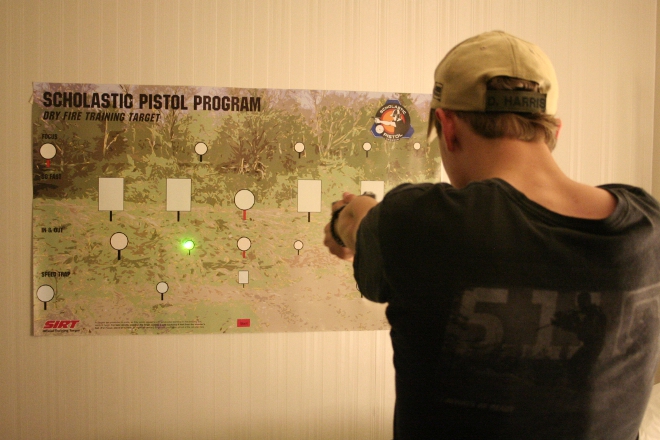
Now, we get it–shooting just isn’t as exciting without the bang but hear us out–if you spend 15 minutes a day training with dry firing, we guarantee you’ll see results on your next trip to the range.
What Is Dry Fire?
Well, it’s pretty simple–dry fire is the act of simulating shooting without ammunition. You go through all the motions–cocking your gun, lining up your sights, pulling the trigger, and resetting the trigger–all without a single round of ammunition in your magazine or chamber.
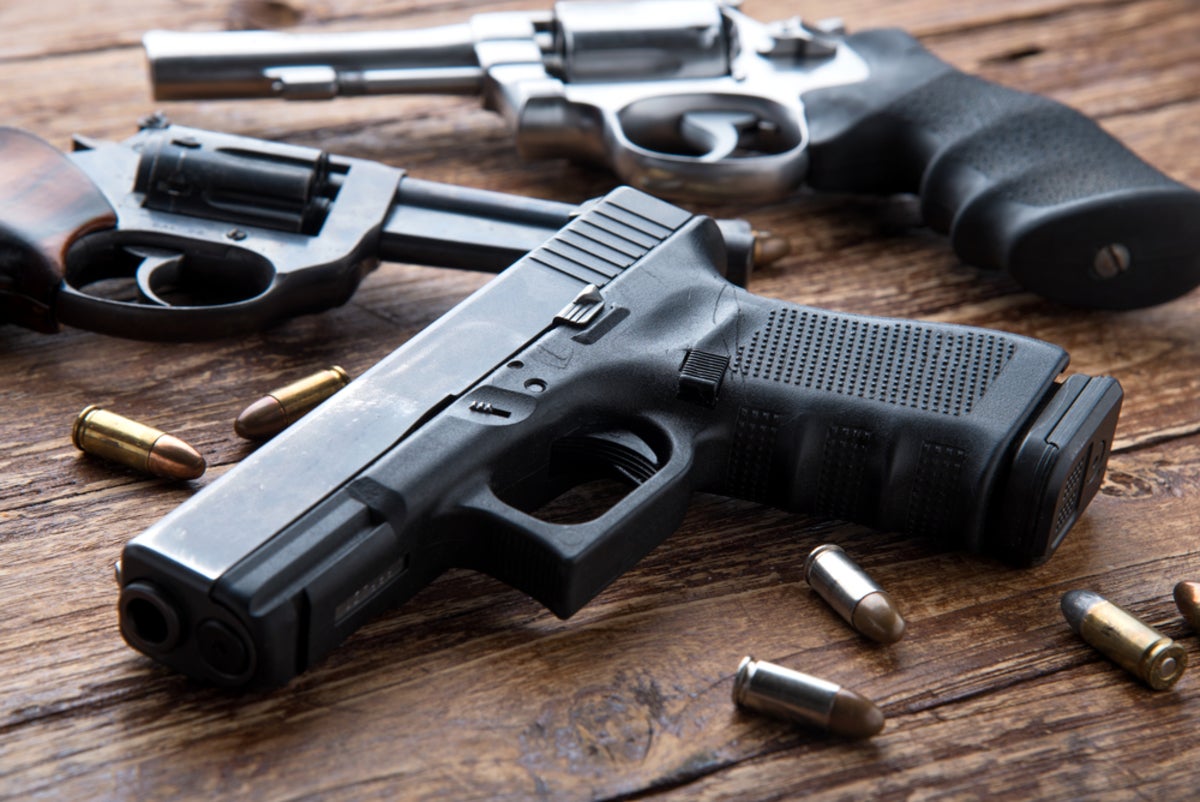
It’s one of the best ways to get used to manipulating your firearm, as well as a great way to teach new shooters how to handle a firearm safely.
And because, ideally, you shouldn’t even have any ammunition in the same room as where you’re training, it’s completely safe to practice at home. All you need is a firearm.
Why Dry Fire?
So, why should you take time to dry fire when you could be live firing? That’s easy–dry firing is a cheap way to build a wide variety of shooting skills and correct potential issues. It’s all about building muscle memory and establishing good habits.
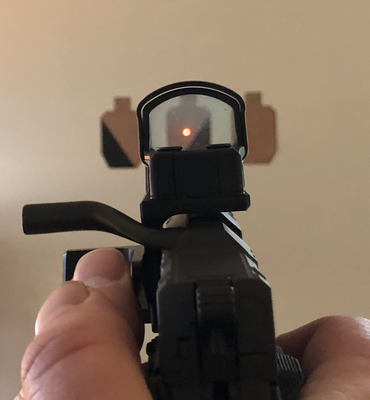
Before you can be a cool tactical operator, you need to have your basics down flawlessly, and that is done by dry fire training.
Dry fire training can help you learn your gun’s operation, understand your trigger pull, learn your sights, and even help eliminate your flinch reaction–a pretty good deal for just a few minutes of training a day and no ammo expenses.
Practicing Safe Dry Fire
Just because dry firing should be safe, doesn’t mean that you don’t need to take a few precautions. After all, part of the point is to practice weapon safety as well, so always follow the 4 Rules of Gun Safety.
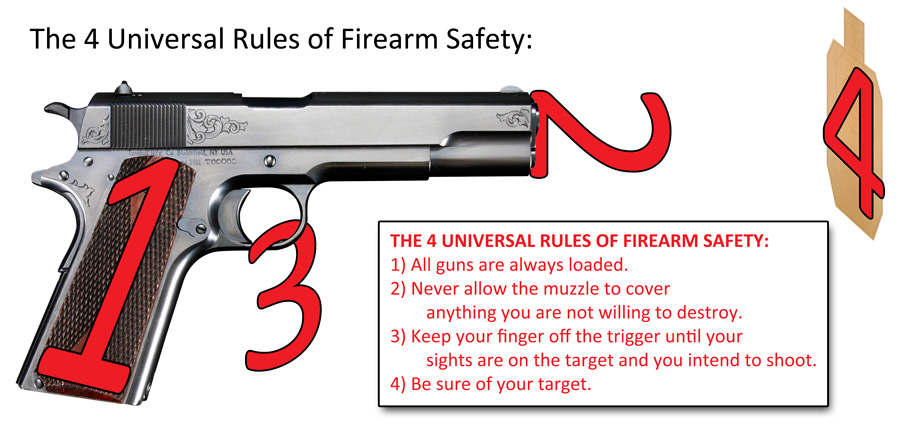
Translating this to dry fire training, you can assume these rules look a lot like this: don’t point your gun at anything you wouldn’t shoot, no matter how certain you are that there is absolutely no ammo in the gun.
This means no pointing at the annoying neighbor’s house through the window, no pointing at your toes, no flagging the dog as he wanders through the living room and you turn to see what he’s up to.
The first step in dry fire training is to unload your weapon, as well as physically and visually ensure that it’s clear. A chamber flag is kind of a cool tool for ensuring weapons stay unloaded since they make it physically impossible to chamber a round.
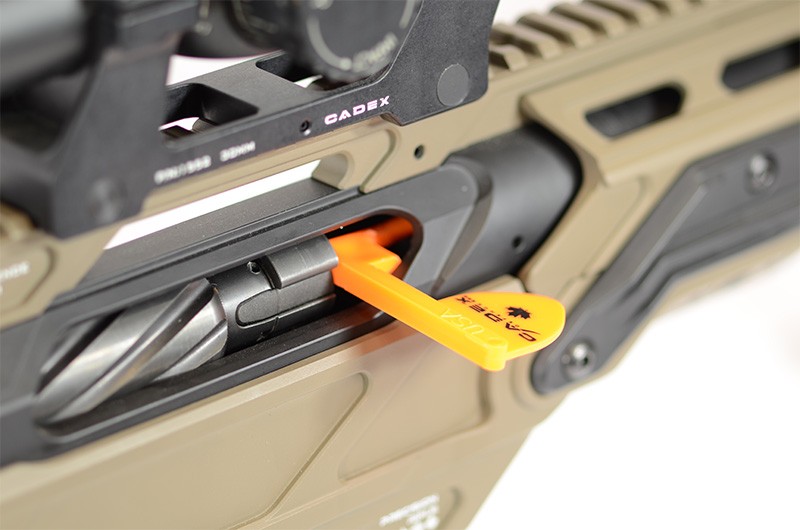
Next, choose what you’re going to practice aiming at. You can buy dry fire laser targets, tack up a target, or even pick something safe to shoot, like a doorknob or picture–ideally, something that won’t be the end of the world should a bang occur. After all, we’re treating this gun as if it’s loaded.
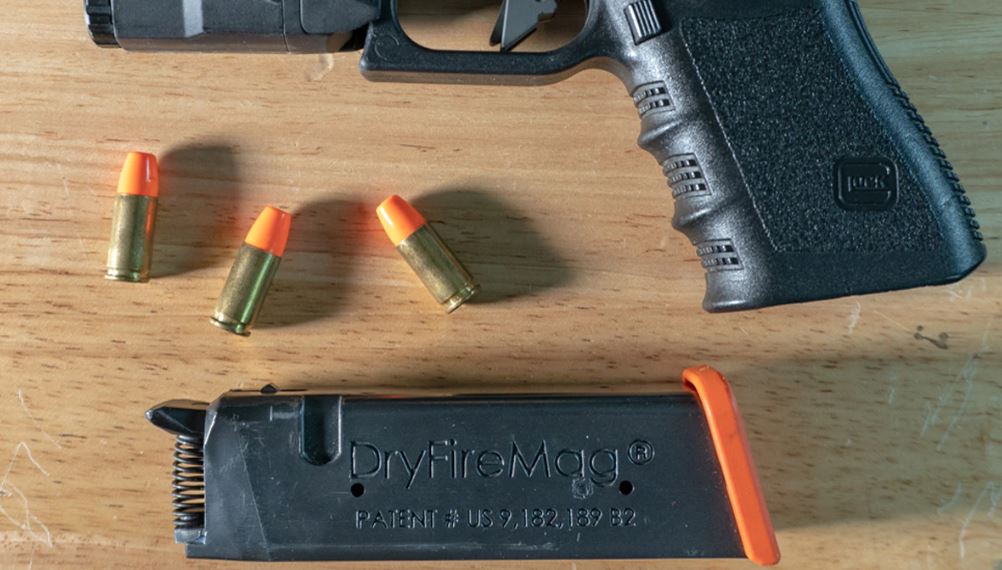
The final step is actually going through the motion, but we’ll talk about it in a minute.
What’s important to remember is that you need to start at step one every single time you pick up your gun, even if you set it down for just a second.
How to Dry Fire
As we mentioned above, steps one and two of dry firing are to pick up and clear your gun, and choose a target.
What that leaves next is to aim at the target and pull the trigger. Easy, right?
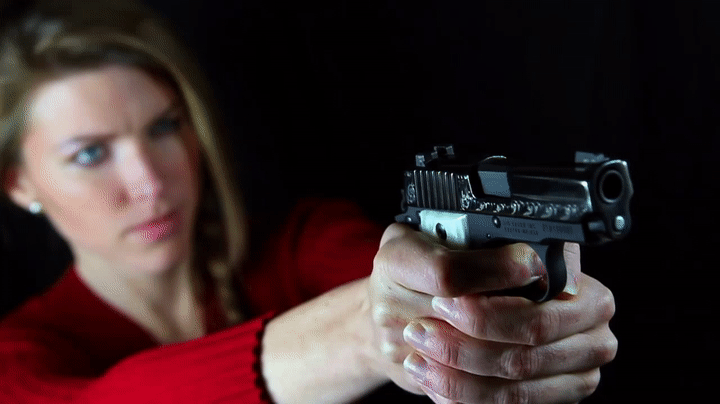
We do recommend that you use a specific target for dry firing every time, so you’re in the mentality of only dry firing at certain targets and are less prone to having an accidental discharge when you think you’re dry firing.
When it comes to dry firing, you’re looking for quality over quantity. Take the time to do it right, rather than trying to do a ton of repetitions. You can also train up bad habits if you aren’t careful.
Try to leave your sights completely undisturbed as you pull the trigger, just like you’d try to do at the range. If you find that your sights are moving as you fire, start trying to diagnose what’s going wrong.
Are you flinching? Is your grip steady? Is your trigger pull smooth and straight? These questions can easily be answered by dry firing.
Dry Fire Drills
Besides just dry firing, there’s a number of other drills you can try to mix it up. You don’t want your practice to get stale or boring, since that’s a great way to make sure you don’t actually do it.
Here are a few of the drills we like to run while dry firing.
Balancing a Coin
This is probably one of the oldest tricks in the book–balance a coin on your front sight, and dry fire. The goal is to keep the coin in place by smoothly pulling your trigger and practicing your grip.
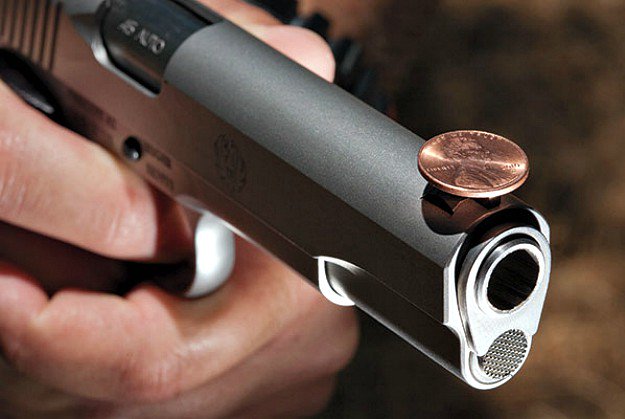
If you’re not perfect, the coin will fall, and you’ll get immediate feedback.
Reloading
Dry fire practice isn’t only for learning to shoot well–it’s also great for practicing adjacent skills, like reloading your gun.
There are a few ways you can practice this. One way is with two empty magazines. Clear the gun and your magazines, load one magazine, and lock the slide to the rear. Place the second magazine in your mag pouch or on your shooting bench.
Get into your normal firing stance, sight on the target, and imagine taking one shot. Since the slide is locked back it’s time to reload. Change your current magazine for the other and bring your gun back up to sight in.
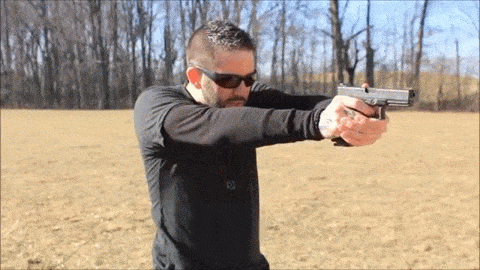
you’re using a training magazine.
If you want to send the slide home during this drill, you’ll need to remove the spring and the follower from your second magazine.
Another way you could run this drill is by using a training magazine as your second mag, which will allow your firearm to function as if you’ve inserted a loaded magazine.
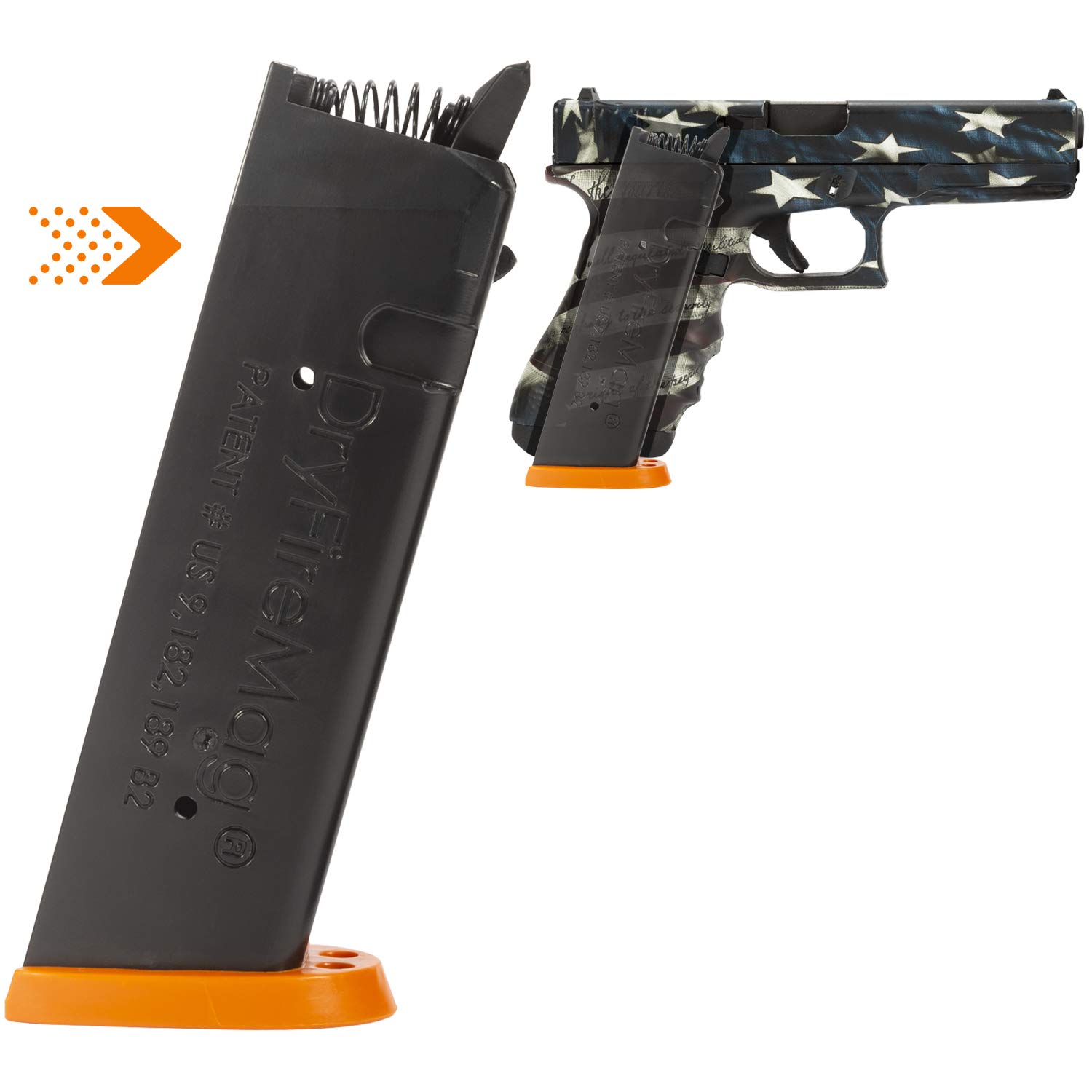
DRYFIREMAG Training Magazine for Glock 9, 40, 357, 45 G.A.P
Pros
- Simulates a real magazine for dry fire drills
- No cycling the slide during drills
- Completely safe to use while drilling
Cons
- Not as cheap as an empty magazine
Drawing from a Holster
Ever wanted to be a cowboy? Us too, which is why we’ve spent a lot of time training on our draw.
If you’ve never used a holster before, you definitely need some dry fire training to learn just how to grip your gun, draw it, and get on target. The best way to practice is by starting slow, and building up your speed as you get smoother and smoother. You’ll be quick-drawing in no time!
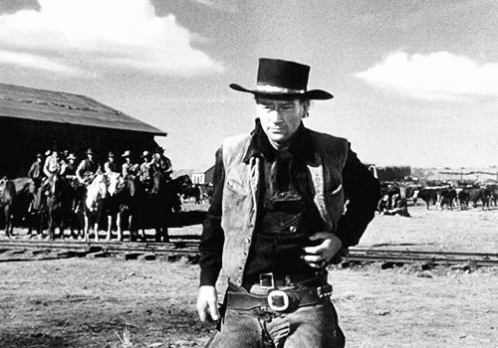
maybe you can shoot like him.
For a little more defensive practice, use a silhouette target and practice dry firing at center mass after you draw.
One-Handed Shooting
While we don’t recommend shooting with one hand, it can be a great skill to have, especially in emergencies. Practice dry firing your gun while holding it in only one hand.
Don’t forget to practice with your dominant and non-dominant hand, as well as practice transitions between hands. Keep it up, and you’ll be pretty dang ambidextrous.
Switching Positions
Finally, one last way you can mix up your practice and round out your shooting skills is by dry firing from different positions. Give standing, kneeling, sitting, and prone a go, as well as engaging targets from behind cover–your door frame is great for this.
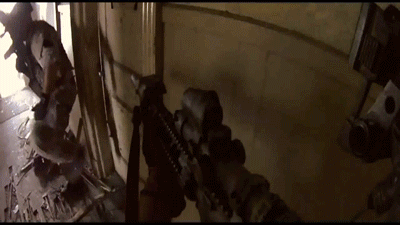
serious advantage in a home invasion scenario.
You can even include one-handed shooting in these drills!
When Should You Dry Fire?
While you can dry fire any time, there are definitely times that will make your dry firing training much more effective.
Dry firing after you’re done live firing is the most beneficial time to train, because any flinches, eye closing, or other reactions to live fire will still be alive and well until your brain adjusts.
Practice the “dry fire Oreo” by beginning with dry fire, switching to live fire, and then switching back again.

It’s important to remember that your muscle memory mistakes will only last for a limited amount of time before your brain catches up, so when we say practice right after live fire, we mean right after. Don’t leave the range until you’ve had a chance to stow your ammo, clear your gun, and dry fire a dozen or so shots.
Any mistakes or sympathetic reactions will become immediately apparent.
In between range days, take 15 minutes out of your day to focus on your training and practice dry fire at home, every day.
Is Dry Fire Bad for My Gun?
Okay–so there’s a myth floating around out there that dry fire will destroy your gun. It’s mostly false. Mostly.
Many firearms, from pistols to rifles to shotguns, can safely dry fire, with the exception of a select few that need a little extra help to dry fire safely.
Much of the firearms that cannot safely dry fire are considered rimfire, which means that the firing pin is designed to strike the rim of the round, and not a central primer. Without a round in the chamber, the firing pin will strike the rim of the chamber, and this can lead to dented chambers and mushroomed firing pins.
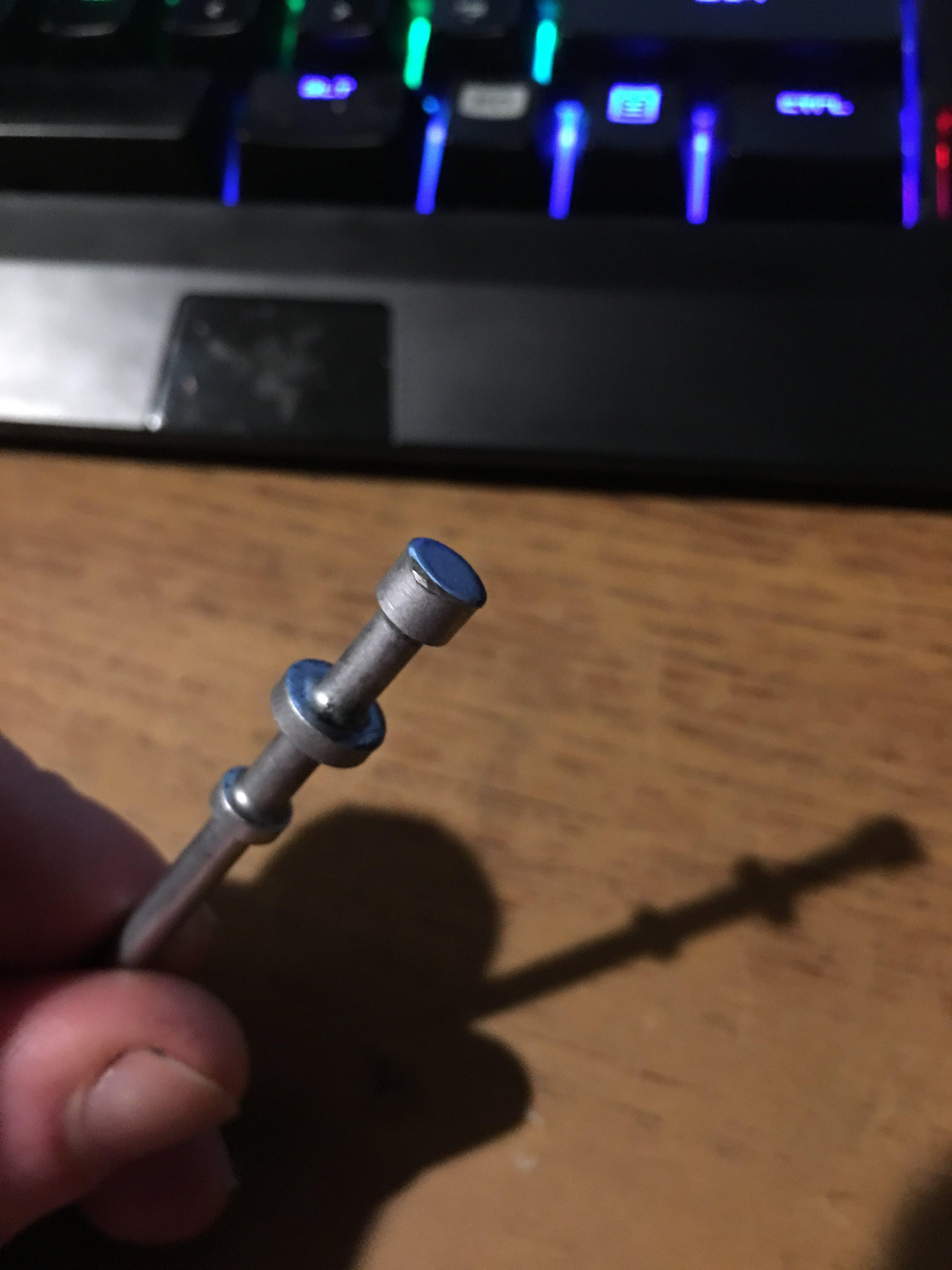
It’s worth noting that some rimfires, like the Ruger 10/22 can be safely dry fired, according to the manufacturer. When in doubt though, don’t–at least not without seeing what you need to do so safely.
Other firearms that may not be safe to dry fire include older guns, such as revolvers without a transfer bar or some older semi-automatics. Without a primer or a transfer bar in place, the firing pin can over travel and strike the sides of the firing pin channel.
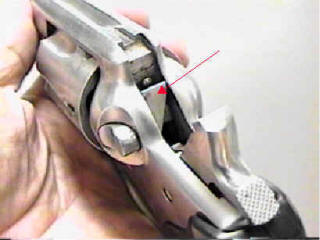
Modern firearms don’t have these issues, but keep it in mind if you’re shooting Grandpa’s hunting rifle.
So, how do you safely dry fire these guns? Are you just out of luck?
Nope! But you will nee a handy little tool to help you out and protect your gun–the Snap Cap.
If you haven’t seen these handly little doohickeys, you’re missing out. They’re essentially a dummy round that has a soft primer so you can dry fire away without causing damage to your gun. You can find snap caps for rimfire revolvers, pistols, rifles, and shotguns!
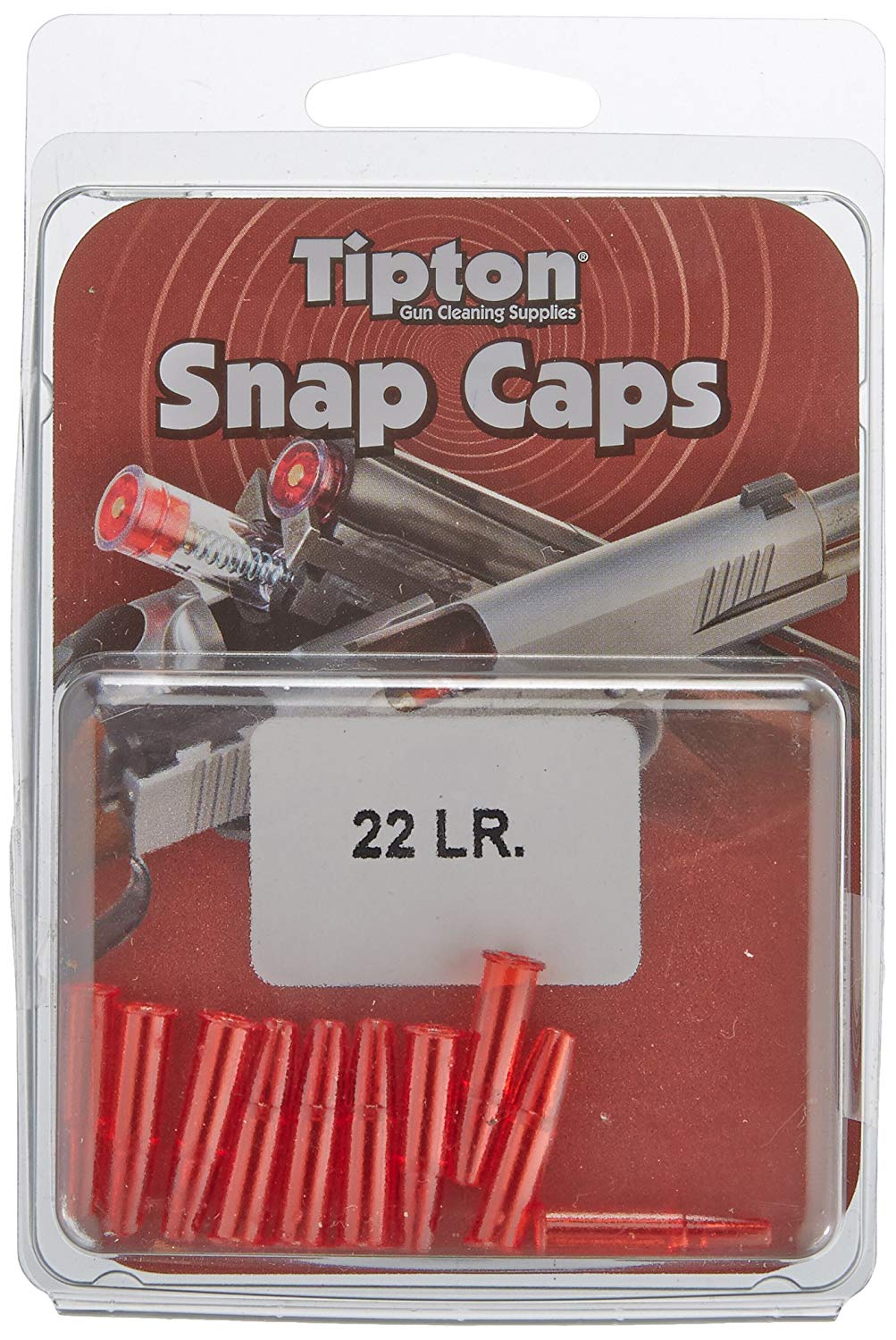
Snap Caps .22LR
Pros
- Protects your gun from damage during dry-firing
- Hard anodized aluminum
- Variety of calibers
Cons
- Rimfire guns dent the end of the cap
Fun Dry Fire Training Gear
Besides Snap Caps, there’s a ton of other cool dry fire training toys out there. We definitely recommend picking up a pack of snap caps, no matter what, but we also think you’d might like to check out some of these tools to take your training to the next level.
Laserlyte
So, we’ve definitely talked about Laserlyte in other articles, like The Ultimate Guide to Accurate Pistol Shooting, and there’s a good reason why–it’s freaking cool. When the striker pin hits this cartridge in the chamber, it triggers a laser beam, showing you where you would have hit with a real bullet.
Laserlytes can be found in a variety of common cartridge sizes, and are pretty affordable for a tool you can use every day to train.
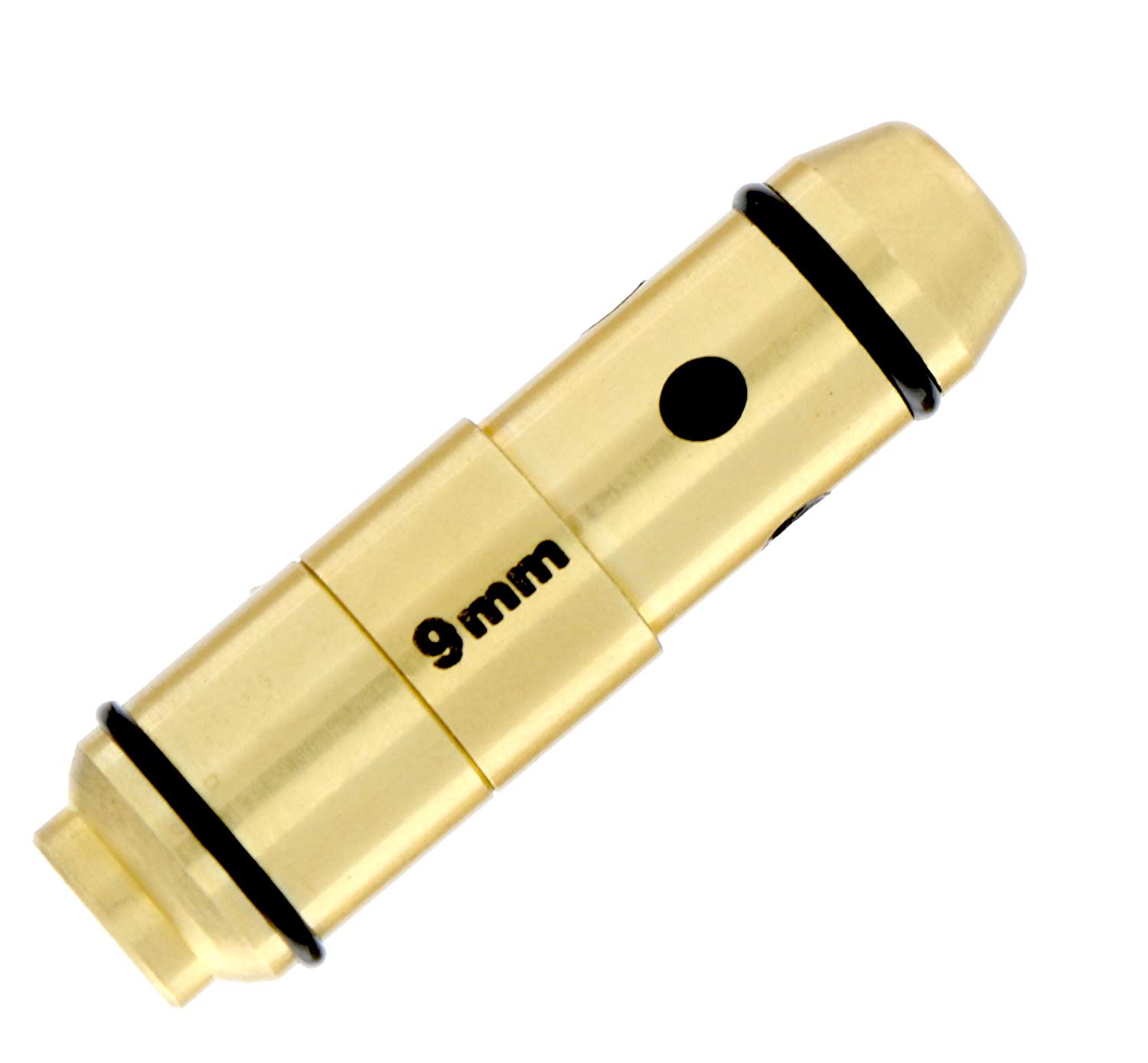
Laserlyte 9mm
Pros
- Helps you see where you're hitting while dry firing
- Pairs with laser targets
- Great visual firing trainer
Cons
- Expensive
Laser Ammo Training Technologies Cartridges
Laserlyte is a trusty old standby, but we’ve found that Laser Ammo Training Technologies offers a lot more variety when it comes to cartridge sizes–you can even find them for airsoft!
These cartridges fit in the chamber of your gun, and fire a short burst of laser beam when the striking pin hits the cartridge. They’re a little more costly than Laserlyte, but have better variety. You can find them in 9mm, .308, .45 ACP, 10mm, .223, 12 Gauge, .40 S&W, .357 SIG, .45 Long Colt, .44 Magnum, and many more!
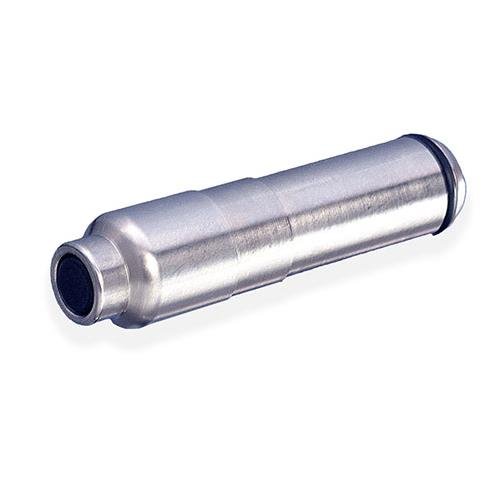
Laser Ammo Training Technologies 9mm Cartridge
Pros
- Provides visual feedback during dry fire
- Protects your gun from damage
- Great variety in calibers
Cons
- Expensive
Laser Training Targets
You’ve got your pick when it comes to laser training targets, all you have to do is find ones you like. Some light up, some make noise, some move around, all of them tell you when you’ve scored a good hit. We particularly like the Laserlyte Quick Tyme targets.
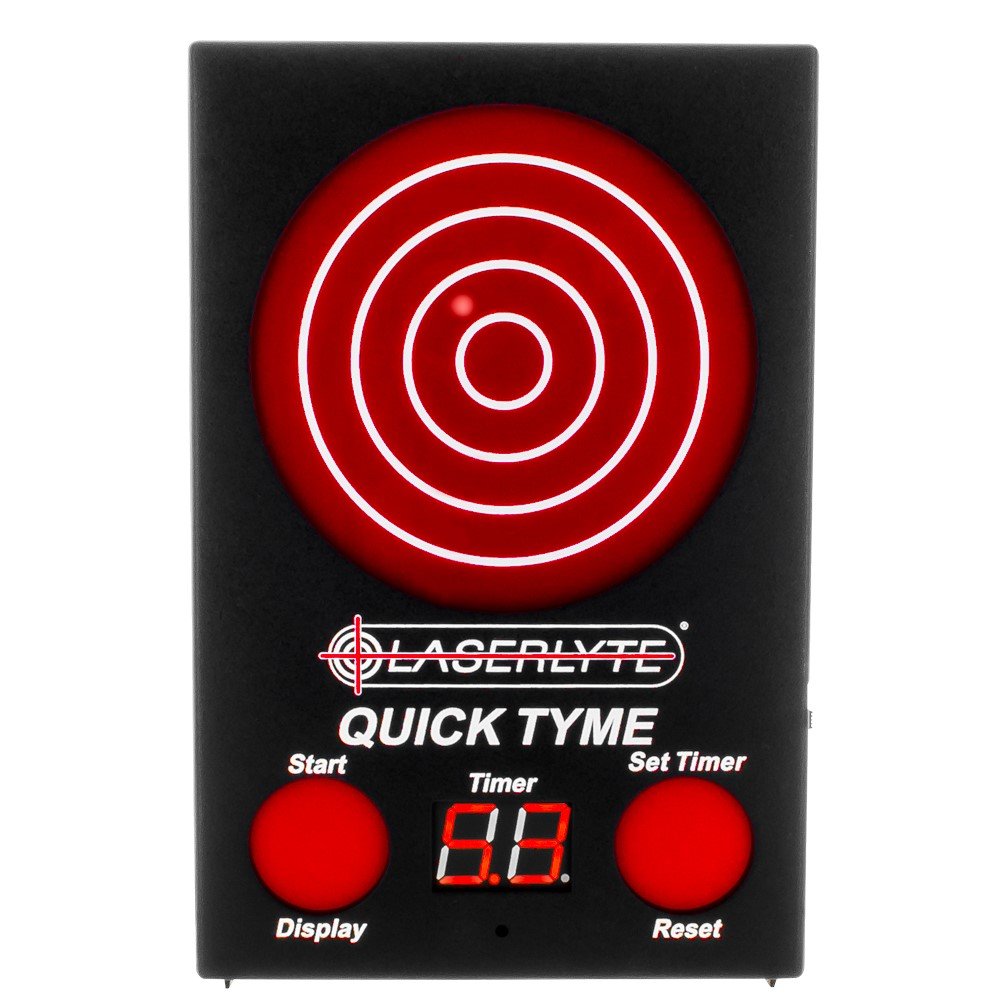
Laserlyte Quick Tyme Targets
Pros
- Records your shots and visually displays them
- Shot timer
- Perfect for at-home training
Cons
- Laser needs to be purchased separately
Pair these with any of the laser cartridges above.
MantisX
Okay, so we’ve also talked about the MantisX in other articles, but it’s just too cool for our resident tech geeks to pass up.
The MantisX attaches to your rail and tracks the movement of your gun. The data is sent to the corresponding app on your phone, and it can help you diagnose what’s wrong with your trigger pull, too.
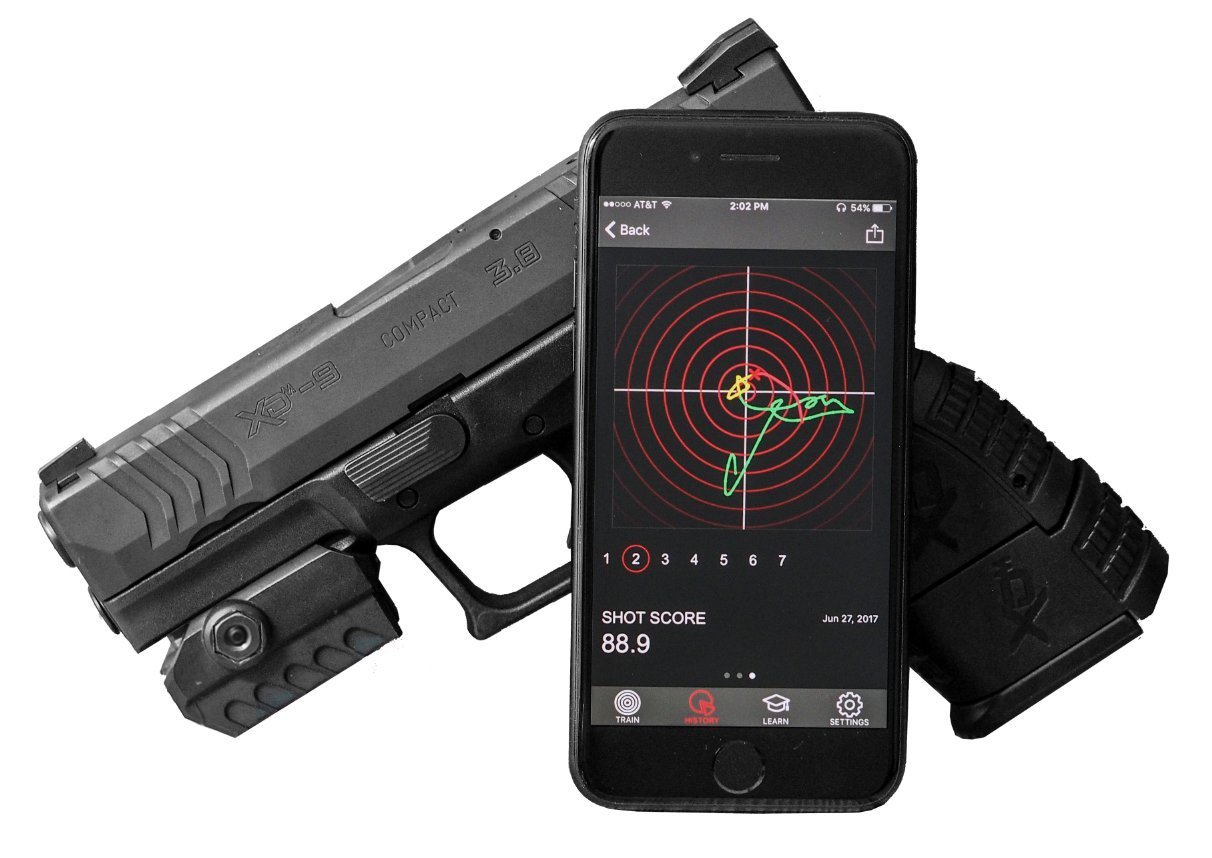
MantisX
Pros
- Bluetooth connected tracker shows your movement on your phone
- Helps you see exactly how you move when firing
- Good for dry-fire and live-fire
Cons
- Expensive
Best of all? It works with live fire, too!
SIRT Pistol
Okay, so this one is a little on the pricey side of things, but SIRT pistols are non-guns that are intended to simulate the feel of a full-sized handgun or compact pistol. There’s even a drop-in AR-15 laser bolt available for your rifle.
Using an integrated laser, the SIRT lets you dry fire away, without risking damage to your real gun. The trigger pull can feel a bit light, but you know this option is 100% safe to drill with, and will never fire a live round.
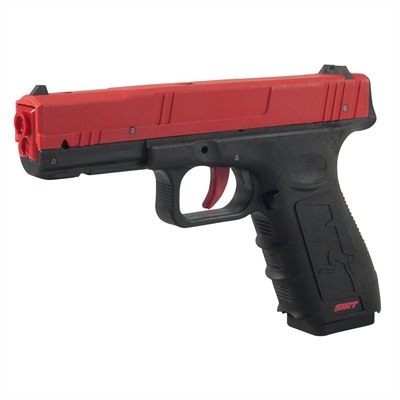
Next Level Training SIRT Pistol
Pros
- Feels like a real handgun
- Not capable of live fire, so it's 100% safe
- Uses a laser to provide visual feedback
Cons
- Expensive
It provides visual feedback and functions a lot like the laser cartridges mentioned above. It even can accept SIRT magazines, which replicate loaded magazines for reloading drills.
Dry Firing Like a Boss
Becoming a dry fire expert isn’t hard, but it does take time, patience, and a little stick-to-it-iveness. In just 15 minutes a day, you have the power to completely change the way your range days go.
While dry firing alone can’t make you an expert shooter, it is a part of a well-rounded training routine.
Do you practice dry fire? Any tips? Do you want to start training with dry fire? Let us know! While you’re here, check out the best new CCWs.


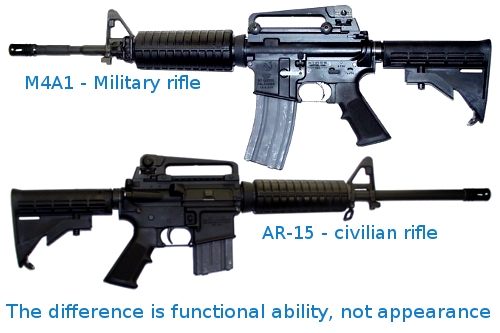
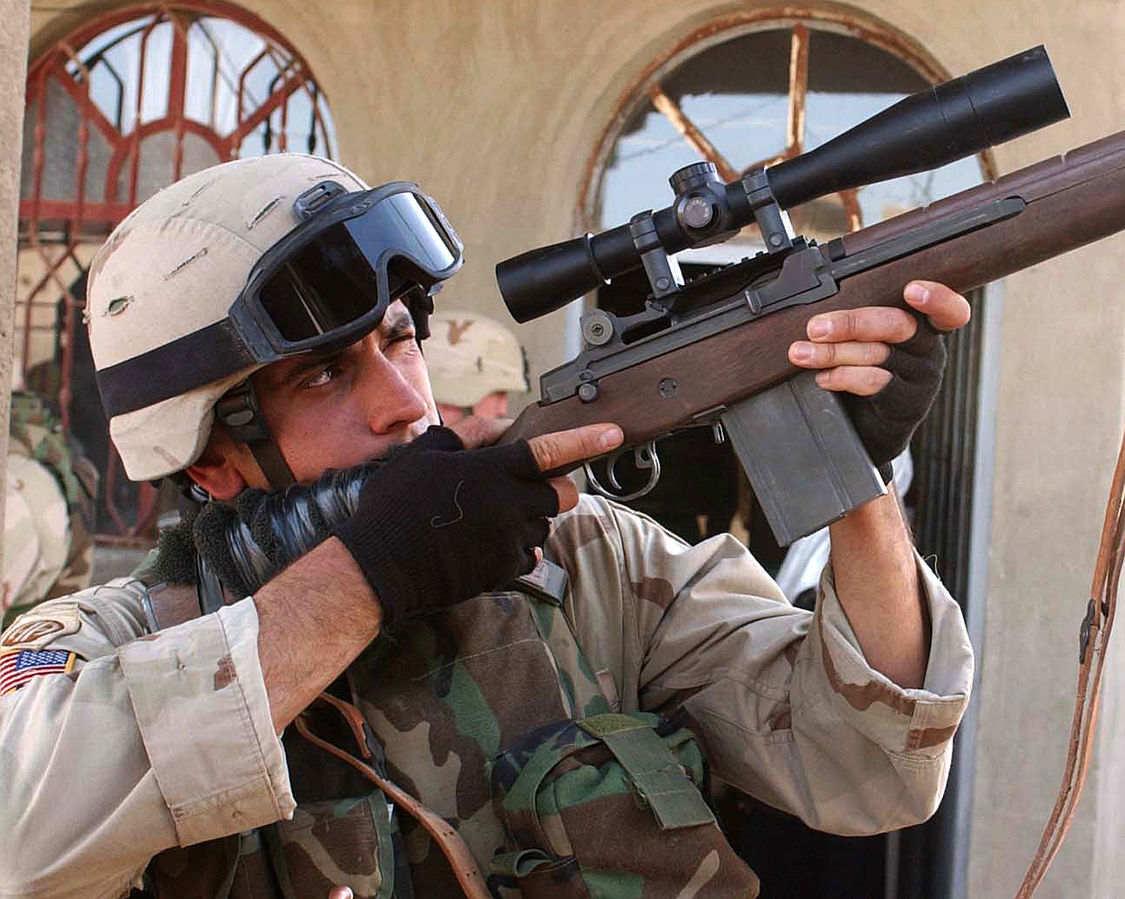
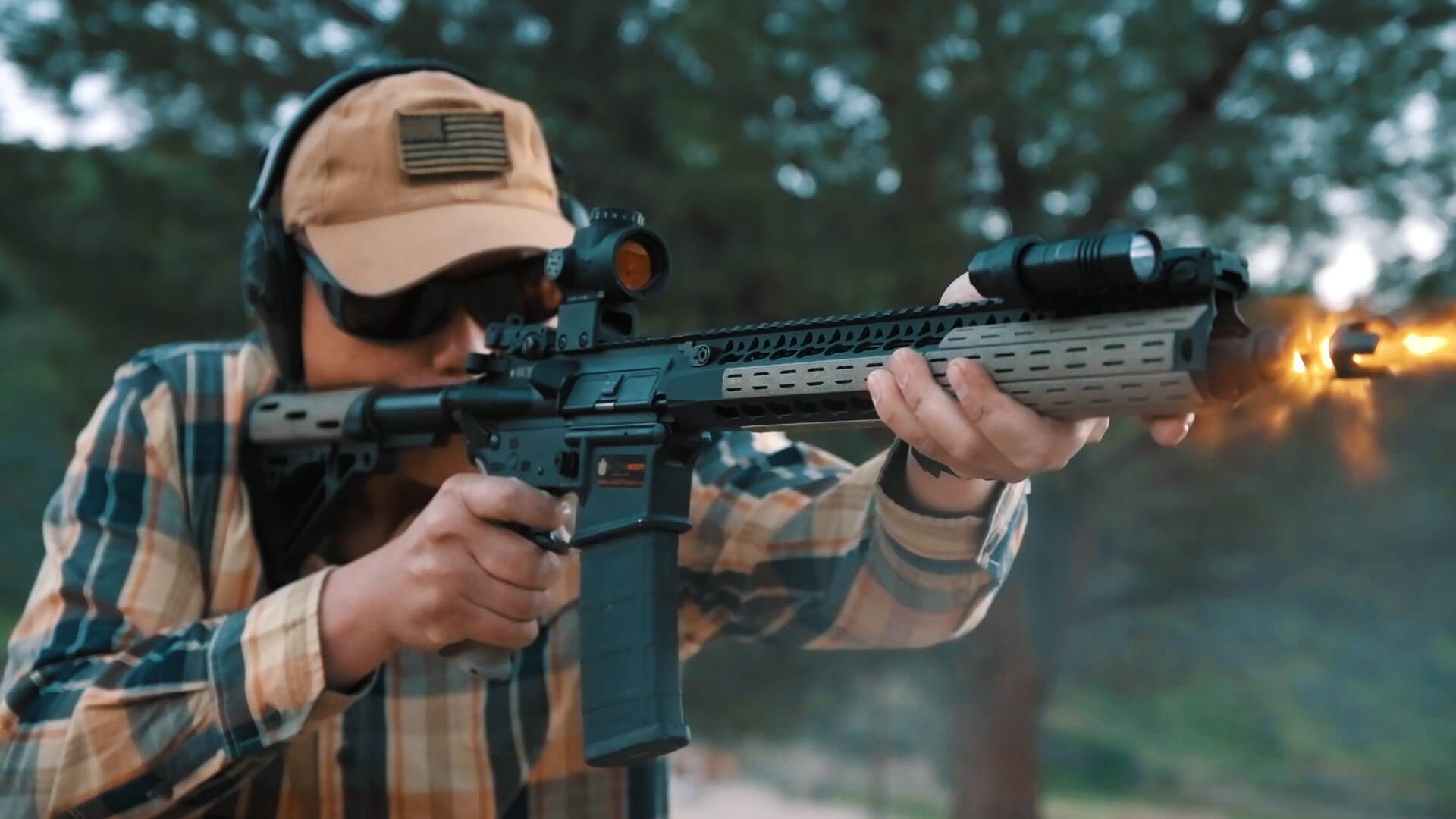
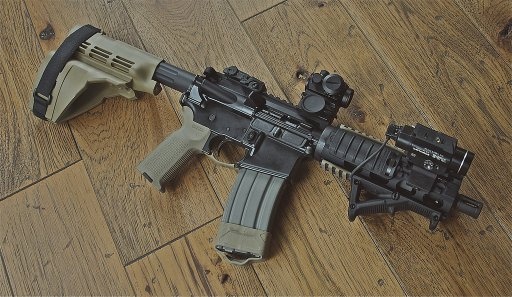
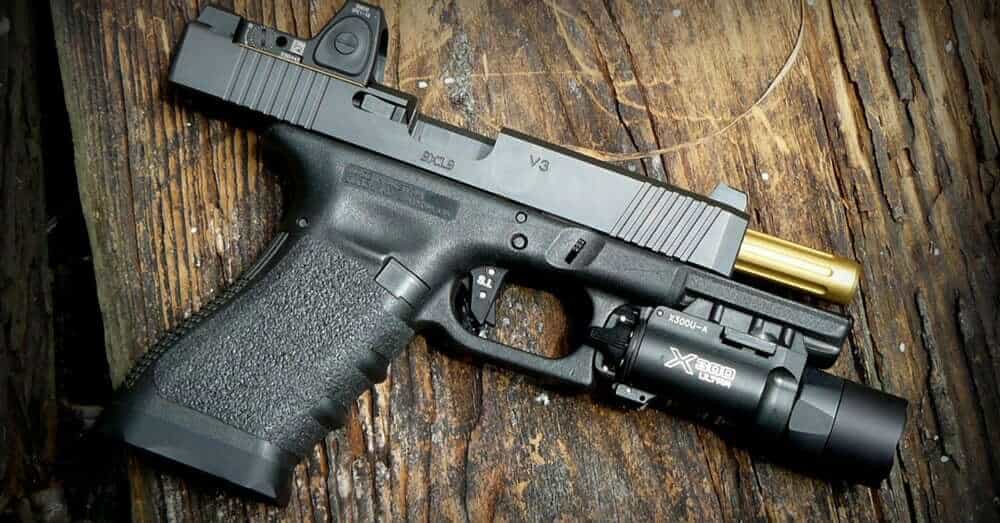
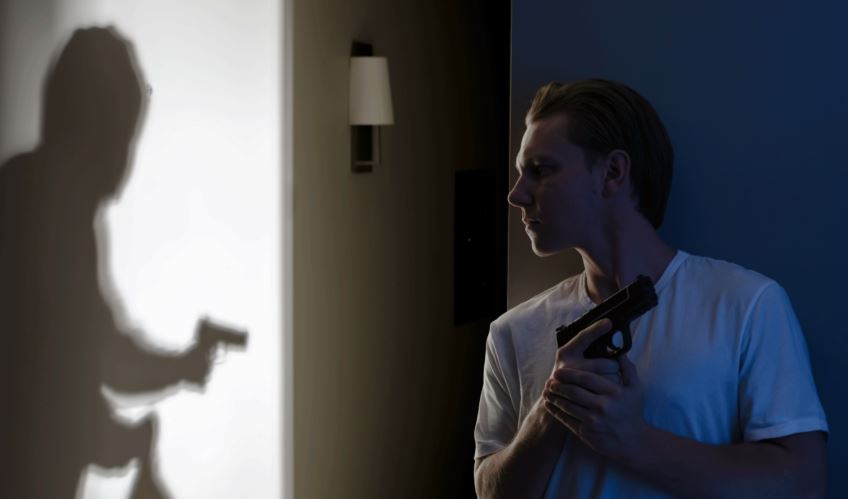
With dry fire laser practice, racking the gun for each shot really slows things down. I have heard there are ways to fake the gun into allowing repeat fire during training? Do you know of any?
Thanks for the article information!
Depending on the platform there are some products that will let you do that, the best for handguns I’ve seen is the DryFireMag
DryFireMag does Not work with firing pin lasers. As I understand it, it only ‘clicks’ so maybe great for working on trigger release/reset practice.
Sorry, but if I have to draw my pistol, I ain’t going to have the time to balance a penny on it.